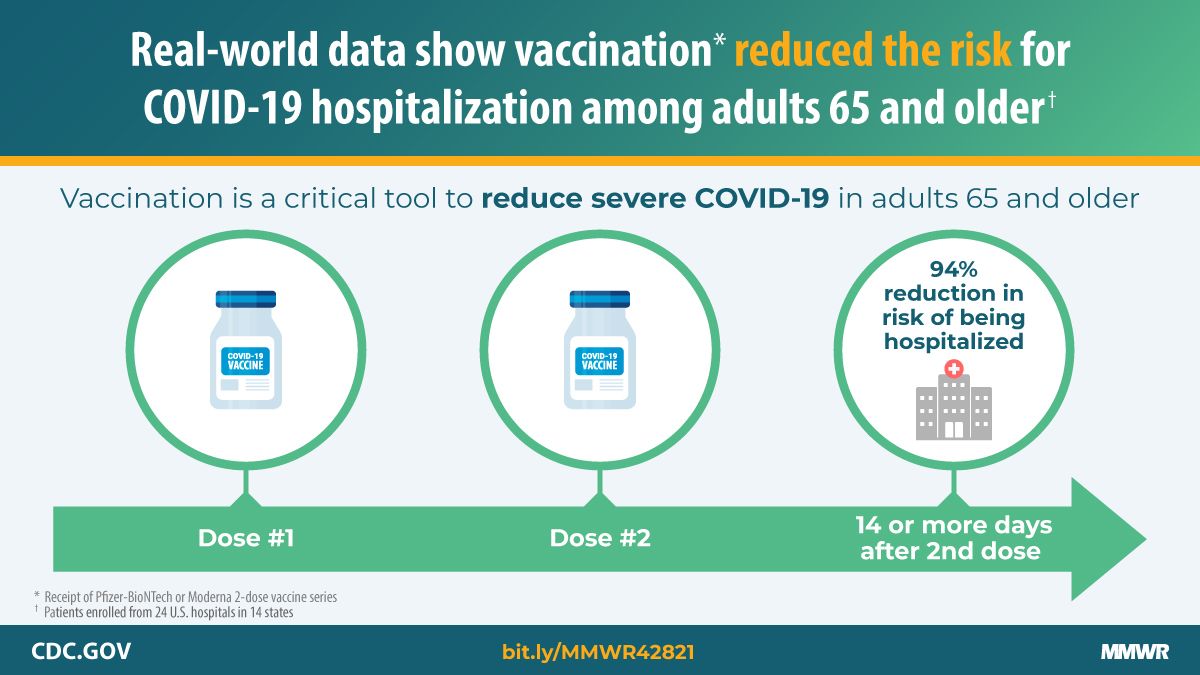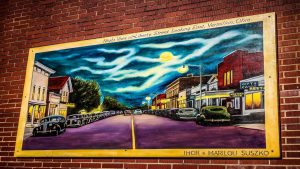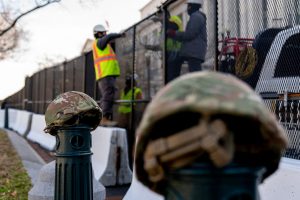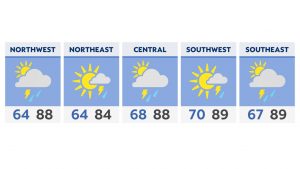COLUMBUS, Ohio — More than a week after an annual Ohio State University (OSU) block party turned into mass chaos, the school’s president released a letter in response to students expressing outrage over the Columbus Police Department’s (CPD) handling of the event.
On April 17, hundreds of students participated in Chitt Fest, a party that’s held every year on the day of the university’s spring football game. At one point, people began flipping cars over on Chittenden Avenue, either causing major damage or totaling vehicles. Some students reported to the police department that people were throwing bottles at their apartment windows.
It took the CPD four hours to disperse the crowds, according to reports, which had many students angry and calling for a better response to the situation. Some students are also calling for the university to cut ties with the department after the death of Ma’Khia Bryant, a 16-year-old girl who was shot and killed by a Columbus officer earlier this month after she attempted to stab two other individuals.
“We have heard the calls to disassociate from CPD. We must acknowledge that they have jurisdiction on and off our Columbus campus and are responsible for keeping our students off campus safe. The Ohio State University Police Division (OSUPD) is the primary agency that performs police work on all of our campuses. There is a mutual-aid agreement in place between OSUPD and CPD that benefits the Ohio State community by allowing OSUPD to assist CPD off campus where many students live,” wrote OSU President Dr. Kristina M. Johnson in a letter.
Johnson wrote that discussions around policing, both on and off campus, are “long overdue.”
No arrests have been made following Chitt Fest. CPD is looking for 18 persons of interest.
Columbus Mayor Andrew J. Ginther said he’s working with Johnson and CPD on how to better address and prepare for similar situations in the future. Students are asking police to patrol off-campus neighborhoods more regularly.
According to NBC4, CPD is operating under new rules on how to handle mass gatherings following the protests over the death of George Floyd last summer, which led to many use-of-force investigations into officers. CPD Patrol Commander Dennis Jeffrey told NBC4 that under the new policy, property damage wasn’t enough of a reason to disperse the crowds.
Read Johnson’s full letter below:
_____
“Dear Ohio State Community Members:
Over the past months, local and national events have sparked critical and long-overdue conversations about policing, safety and racial justice. Some in our community have called on the university to cut ties with the Columbus Division of Police (CPD). Others have called for the increased presence of CPD in the off-campus neighborhood. Others say we need to entirely change the way that we approach public safety.
The university is hearing you and acknowledges the perspectives that are being shared by students, their families, faculty and staff members, and our community as a whole. The issues currently being discussed are as vital to our society as they are multifaceted and complex.
I want to take the opportunity to address questions and concerns and provide information on the ways we are working to address safety issues on our campuses.
CPD partnership and police and security patrols
We have heard the calls to disassociate from CPD. We must acknowledge that they have jurisdiction on and off our Columbus campus and are responsible for keeping our students off campus safe. The Ohio State University Police Division (OSUPD) is the primary agency that performs police work on all of our campuses. There is a mutual-aid agreement in place between OSUPD and CPD that benefits the Ohio State community by allowing OSUPD to assist CPD off campus where many students live. This permits our OSUPD officers to have additional influence and opportunities to offer support in the area, learn about and disseminate crime information, and offer university resources. In Columbus, the university also hires individual CPD officers to perform specific services, largely traffic control for athletics events when city streets are being utilized.
We have also heard calls to expand police presence. During the autumn semester, the university reengaged with the Community Crime Patrol to increase security in the off-campus area. In the fall and spring, Ohio State also increased off-campus police presence with a combination of OSUPD and CPD officers. Ohio State and the city of Columbus continue to adjust to crime trends by redeploying on-duty patrols and staffing patrols on overtime to add to the police presence in the University District. We know that patrols and policing cannot be the only solution; safety means many different things to many different people, and we must take a holistic approach.
Task Force on Community Safety and Well-Being
The safety and well-being of our campus and neighboring communities is our top priority, and the university continues to implement a series of recommendations that were made as part of the Task Force on Community Safety and Well-Being. The task force, created in fall 2020, is composed of students, faculty, staff, public safety officials and city and community partners. With a central guiding point that safety means different things to different people, the task force developed a comprehensive list of 15 recommendations that include a variety of strategies from community outreach and engagement to public safety staffing. To date, substantial progress has been made on 13 of those recommendations.
We have quickly implemented task force recommendations , including increased Community Crime Patrols made up of community partners, improved lighting, and expanded discounted ridesharing hours as part of Lyft Ride Smart at Ohio State. In addition to these steps, the university has increased police presence in the off-campus area with a combination of OSUPD and CPD officers and has longer-term plans to increase the staffing of OSUPD to allow for more joint patrol coverage and increased presence of OSUPD officers east of High Street. The task force also continues to advance longer-term recommendations designed to influence the overall safety culture both on and off campus such as expanding community policing programs and initiatives, with a special focus on outreach and interactions with marginalized groups.
Research-based solutions
We continue to provide thought leadership based on research and scholarship, a vital part of our mission as a land-grant university. Earlier this week, Dr. Trevor Brown, dean of the John Glenn College of Public Affairs and executive dean of the university’s professional colleges, presented the results of an independent, eight-month research study evaluating how the city of Columbus and CPD managed and responded to protests in Columbus last summer. I encourage you to read the After-Action Review from former U.S. Attorney for the Southern District of Ohio Carter Stewart and the Glenn College. The recommendations address the way police train and prepare for protests and large-scale events, and better ways for police to manage and engage with protestors. The recommendations also provide active steps for working toward a reconciliation with those community members who are angry, particularly Black community members.
As a modern land-grant public university, Ohio State honors diverse perspectives, engages on challenging issues and works to improve the well-being of our state, regional, national and global communities.”




